

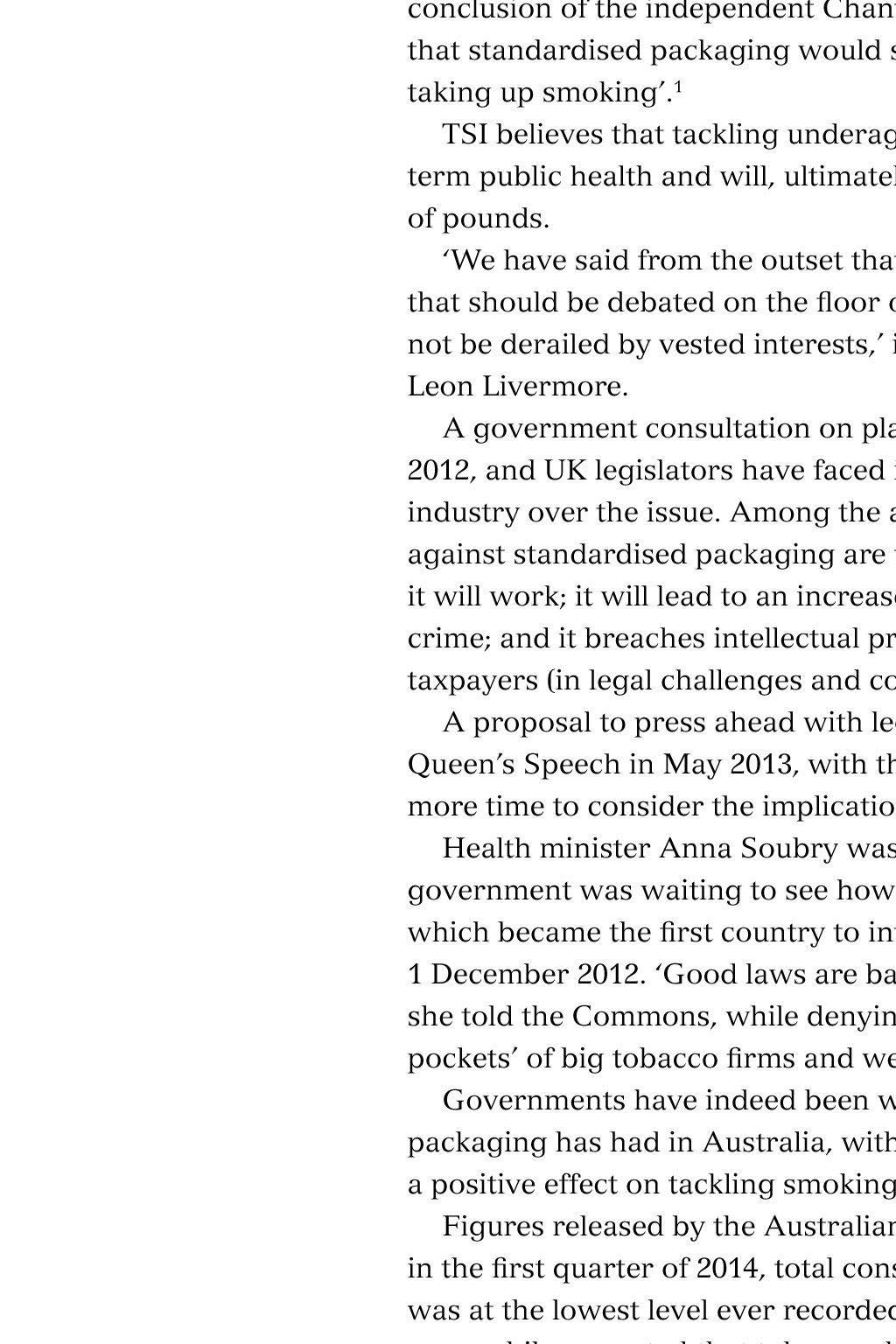
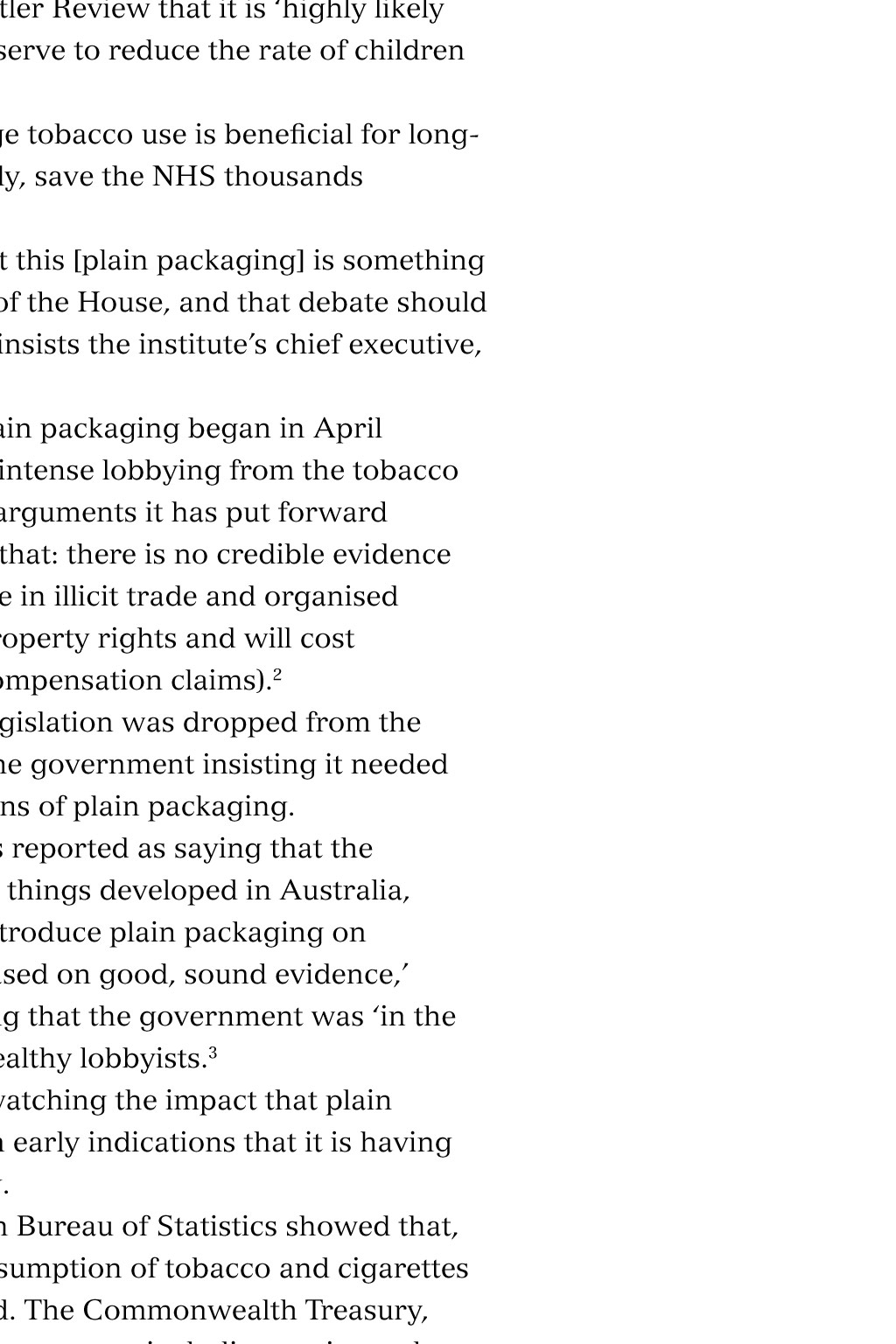
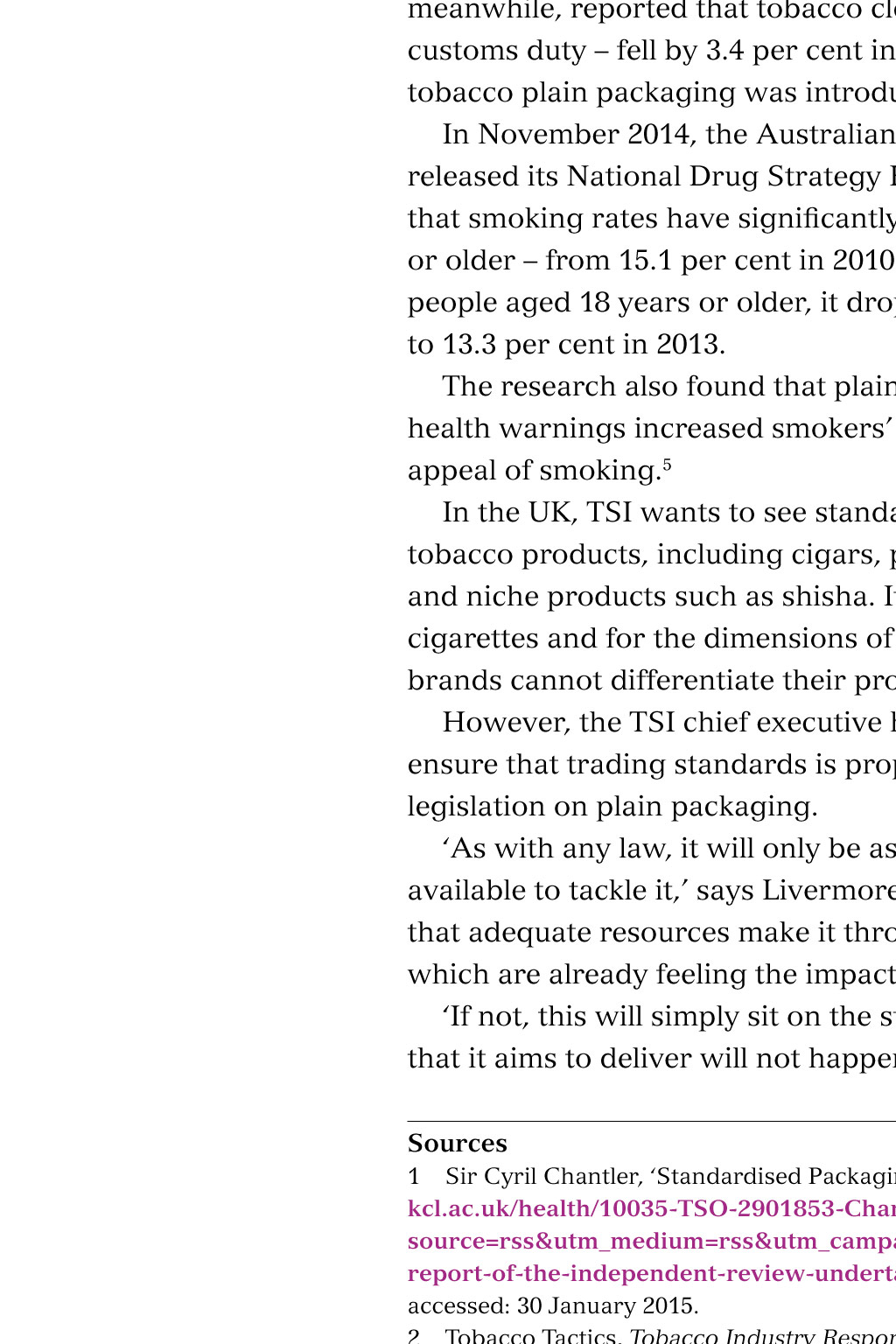
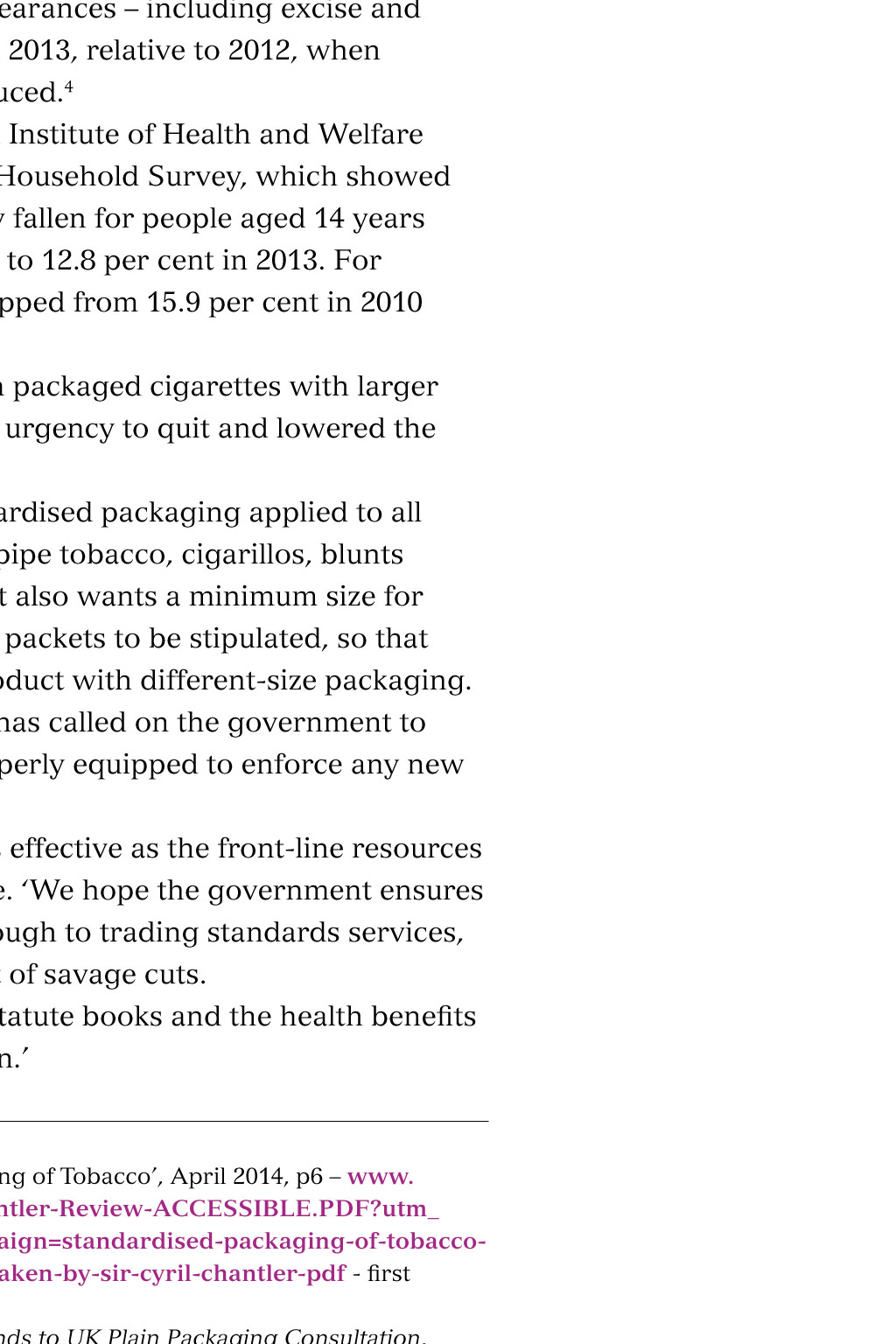
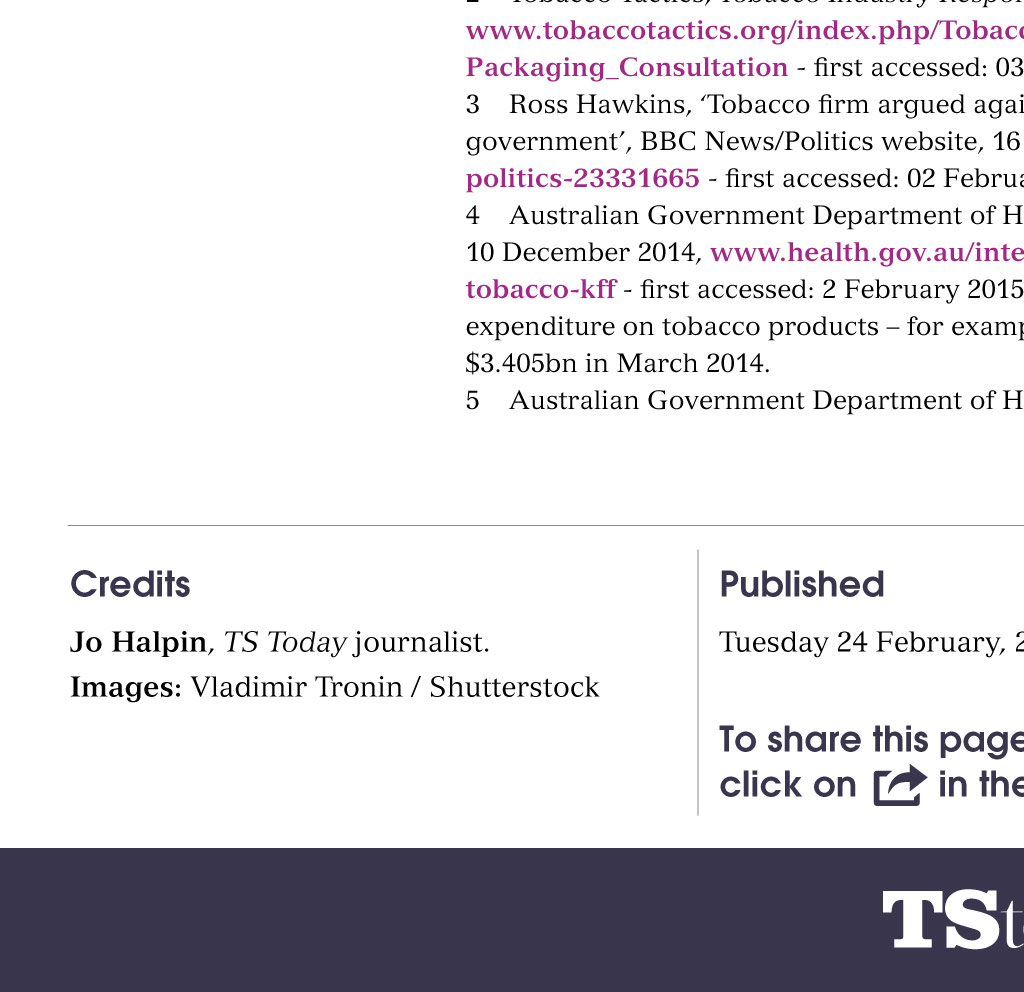
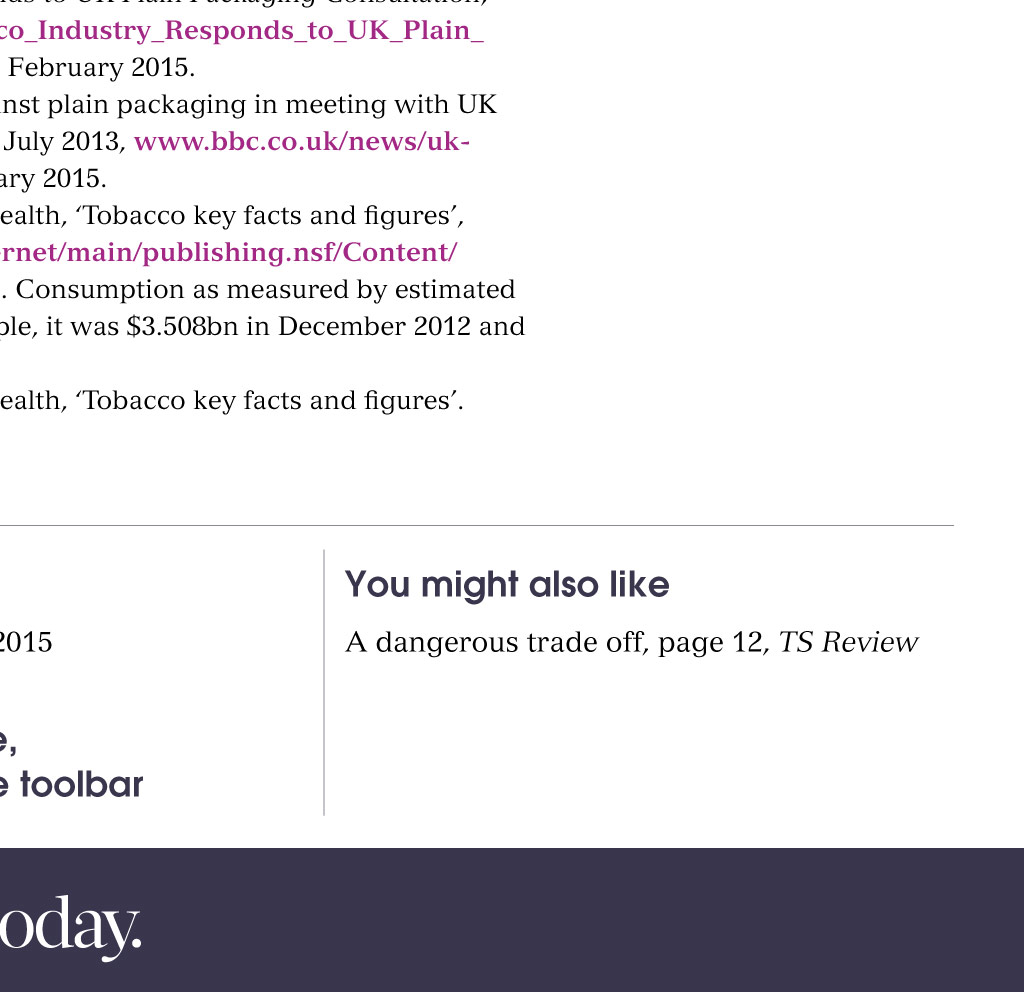









news analysis Lighting up the debate MPs are to get a free vote on introducing standardised cigarette packs before the General Election in May, reports Jo Halpin After years of debate and delay, plain (standardised) packaging for tobacco products could become law in the UK before the General Election. MPs are to be given a free vote on the issue, which will go before parliament in time to be agreed by both Houses prior to the country going to the polls on 7 May. The move has been welcomed by TSI, which agrees with the conclusion of the independent Chantler Review that it is highly likely that standardised packaging would serve to reduce the rate of children taking up smoking.1 TSI believes that tackling underage tobacco use is beneficial for longterm public health and will, ultimately, save the NHS thousands of pounds. We have said from the outset that this [plain packaging] is something that should be debated on the oor of the House, and that debate should not be derailed by vested interests, insists the institutes chief executive, Leon Livermore. A government consultation on plain packaging began in April 2012, and UK legislators have faced intense lobbying from the tobacco industry over the issue. Among the arguments it has put forward against standardised packaging are that: there is no credible evidence itwill work; it will lead to an increase in illicit trade and organised crime; and it breaches intellectual property rights and will cost taxpayers (in legal challenges and compensation claims).2 A proposal to press ahead with legislation was dropped from the Queens Speech in May 2013, with the government insisting it needed more time to consider the implications of plain packaging. Health minister Anna Soubry was reported as saying that the government was waiting to see how things developed in Australia, which became the first country to introduce plain packaging on 1 December 2012. Good laws are based on good, sound evidence, she told the Commons, while denying that the government was in the pockets of big tobacco firms and wealthy lobbyists.3 Governments have indeed been watching the impact that plain packaging has had in Australia, with early indications that it is having apositive effect on tackling smoking. Figures released by the Australian Bureau of Statistics showed that, in the first quarter of 2014, total consumption of tobacco and cigarettes was at the lowest level ever recorded. The Commonwealth Treasury, meanwhile, reported that tobacco clearances including excise and customs duty fell by 3.4 per cent in 2013, relative to 2012, when tobacco plain packaging was introduced.4 In November 2014, the Australian Institute of Health and Welfare released its National Drug Strategy Household Survey, which showed that smoking rates have significantly fallen for people aged 14 years orolder from 15.1 per cent in 2010 to 12.8 per cent in 2013. For peopleaged 18 years or older, it dropped from 15.9 per cent in 2010 to13.3 per cent in 2013. The research also found that plain packaged cigarettes with larger health warnings increased smokers urgency to quit and lowered the appeal of smoking.5 In the UK, TSI wants to see standardised packaging applied to all tobacco products, including cigars, pipe tobacco, cigarillos, blunts and niche products such as shisha. It also wants a minimum size for cigarettes and for the dimensions of packets to be stipulated, so that brands cannot differentiate their product with different-size packaging. However, the TSI chief executive has called on the government to ensure that trading standards is properly equipped to enforce any new legislation on plain packaging. As with any law, it will only be as effective as the front-line resources available to tackle it, says Livermore. We hope the government ensures that adequate resources make it through to trading standards services, which are already feeling the impact of savage cuts. If not, this will simply sit on the statute books and the health benefits that it aims to deliver will not happen. Sources 1 Sir Cyril Chantler, Standardised Packaging of Tobacco, April 2014, p6 www. kcl.ac.uk/health/10035-TSO-2901853-Chantler-Review-ACCESSIBLE.PDF?utm_ source=rss&utm_medium=rss&utm_campaign=standardised-packaging-of-tobaccoreport-of-the-independent-review-undertaken-by-sir-cyril-chantler-pdf - first accessed: 30 January 2015. 2 Tobacco Tactics, Tobacco Industry Responds to UK Plain Packaging Consultation, www.tobaccotactics.org/index.php/Tobacco_Industry_Responds_to_UK_Plain_ Packaging_Consultation - first accessed: 03 February 2015. 3 Ross Hawkins, Tobacco firm argued against plain packaging in meeting with UK government, BBC News/Politics website, 16 July 2013, www.bbc.co.uk/news/ukpolitics-23331665 - first accessed: 02 February 2015. 4 Australian Government Department of Health, Tobacco key facts and figures, 10December 2014, www.health.gov.au/internet/main/publishing.nsf/Content/ tobacco-kff - first accessed: 2 February 2015. Consumption as measured by estimated expenditure on tobacco products for example, it was $3.508bn in December 2012 and $3.405bn in March 2014. 5 Australian Government Department of Health, Tobacco key facts and figures. Credits Published You might also like Jo Halpin, TS Today journalist. Tuesday 24 February, 2015 A dangerous trade off, page 12, TS Review Images: Vladimir Tronin / Shutterstock To share this page, click on in the toolbar "